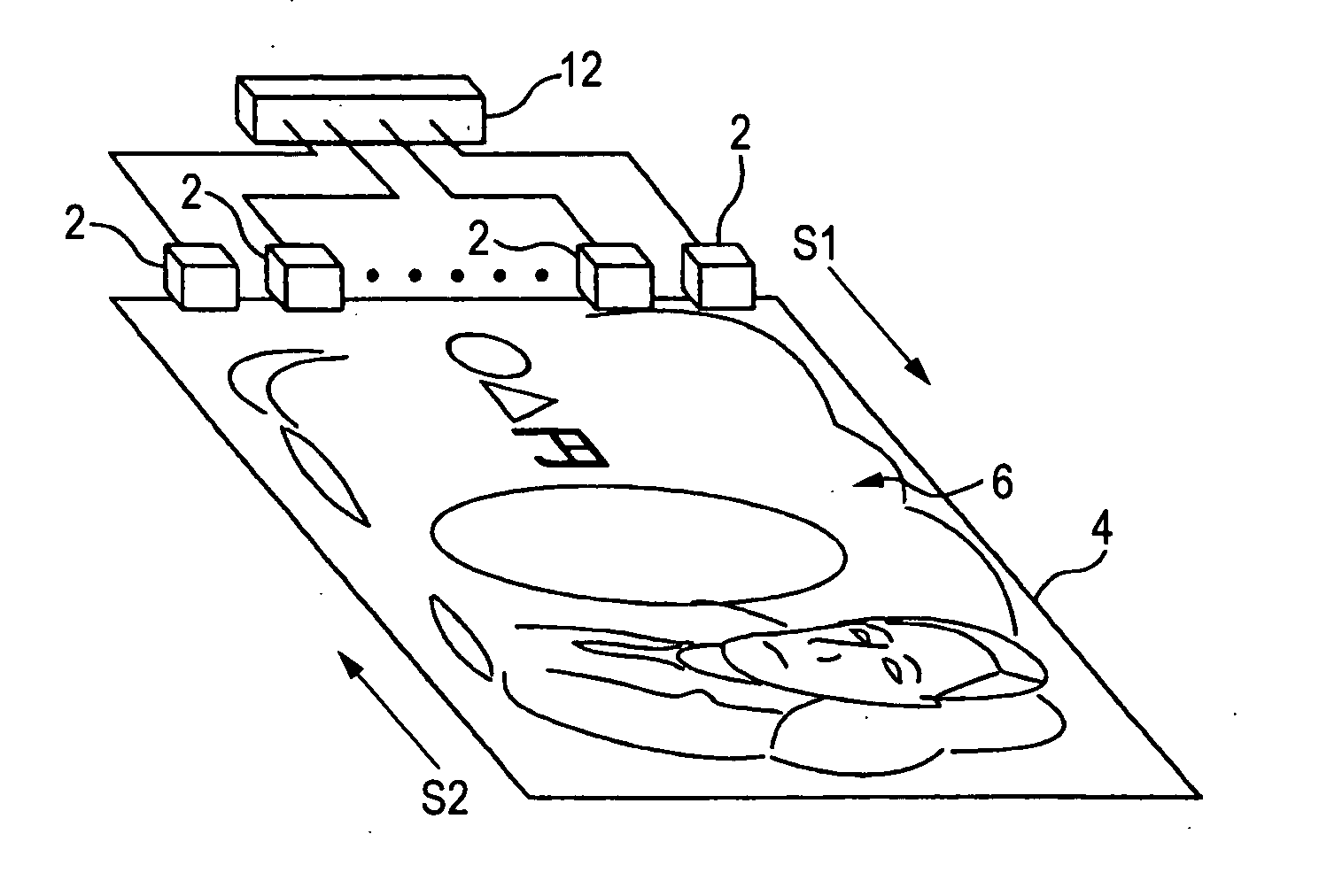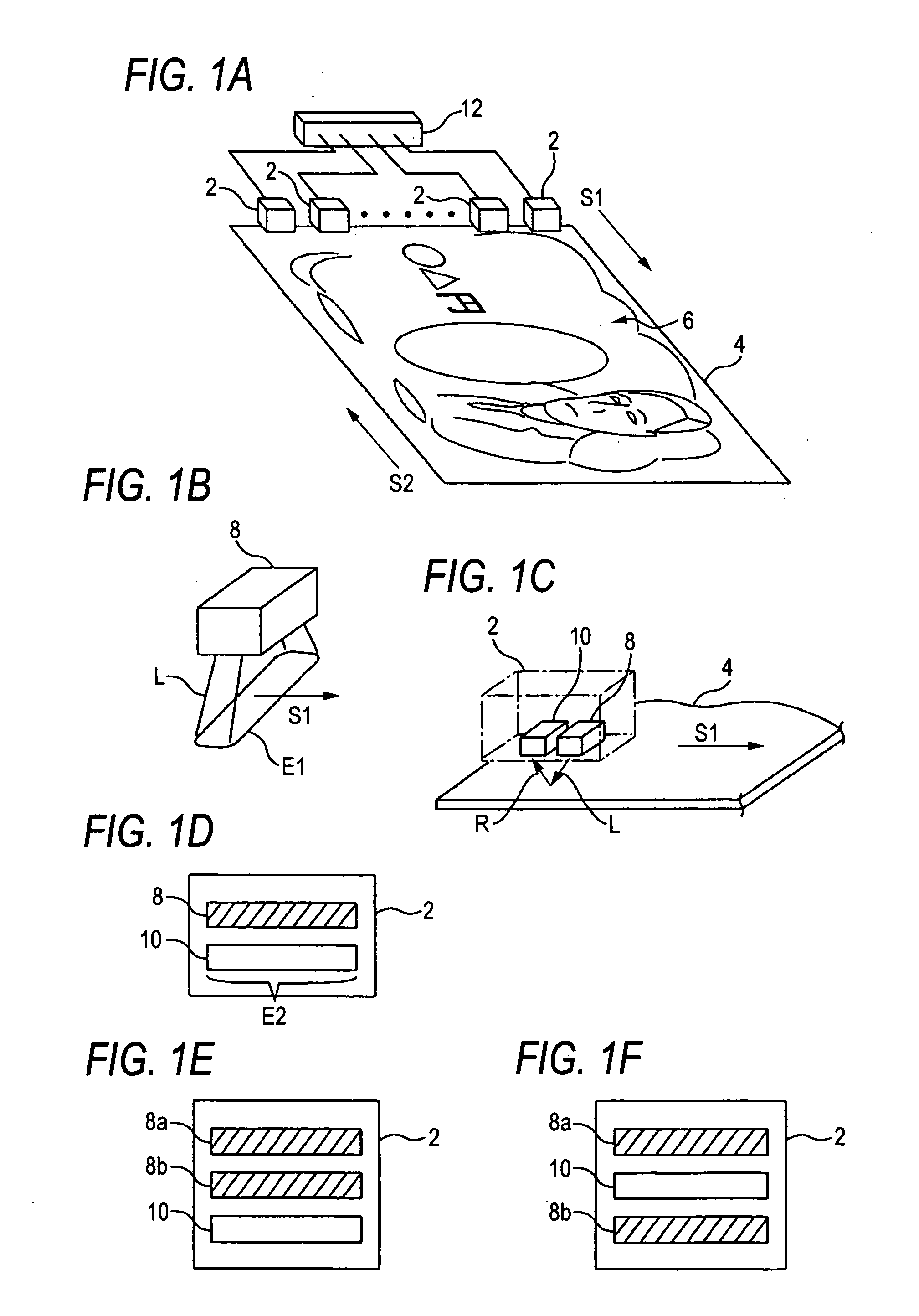Identification sensor
a technology of identification sensor and detection sensor, which is applied in the field of identification sensor, can solve the problem that the completed product is erroneously determined to be a defective product, and achieve the effect of determining the authenticity, the accuracy and the like of an object, and excellent discriminating function
- Summary
- Abstract
- Description
- Claims
- Application Information
AI Technical Summary
Benefits of technology
Problems solved by technology
Method used
Image
Examples
first embodiment
[0029]FIGS. 1B and 1C show the configuration of the discrimination sensor 2 according to the invention. Such a discrimination sensor 2 includes a light emitting device 8 adapted to emit sensing light L, the sensing area E1 corresponding to which extends in a direction perpendicular to the scanning direction S1 is wide, toward the surface of the object (or bill) 4, and also includes a light receiving device 10 adapted to receive light R generated on the surface structure 6 of the bill 4 when the sensing light L is emitted, and also adapted to assure a wide light receiving area E2 in a direction perpendicular to the scanning direction S1. The light emitting device 8 and the light receiving device 10 are formed integrally with each other in the discrimination sensor 2 (see FIG. 1D).
[0030] In the first embodiment, the light R generated on the surface structure 6 of the bill 4 is assumed to be reflection light reflected from the surface of the bill 4 when the sensing light L is emitted. ...
second embodiment
[0063] Further, although the light emitters of the second embodiment are respectively constituted by plural (two, in this embodiment) light emitting portions 8a and 8b each adapted to individually emit sensing light beams (that is, a near infrared light beam and a visible light beam) L of wavelength bands differing from each other. However, the light emitters according to this embodiment are not limited thereto. For example, as shown in FIGS. 5A and 5B, the light emitter may be constituted by a single light emitter enabled to individually emit sensing light beams (that is, a near infrared light beam and a visible light beam) L of wavelength bands differing from each other (with the predetermined timing alternately).
[0064] In this case, for example, a method of changing the oscillating wavelength of the light emitter 8′ by switching the value of the voltage applied to the light emitter 8′ can be employed as the method of causing the light emitter 8′ to individually emit plural sensin...
PUM
| Property | Measurement | Unit |
|---|---|---|
| wavelength band | aaaaa | aaaaa |
| wavelength band | aaaaa | aaaaa |
| wavelength band | aaaaa | aaaaa |
Abstract
Description
Claims
Application Information
 Login to View More
Login to View More - R&D
- Intellectual Property
- Life Sciences
- Materials
- Tech Scout
- Unparalleled Data Quality
- Higher Quality Content
- 60% Fewer Hallucinations
Browse by: Latest US Patents, China's latest patents, Technical Efficacy Thesaurus, Application Domain, Technology Topic, Popular Technical Reports.
© 2025 PatSnap. All rights reserved.Legal|Privacy policy|Modern Slavery Act Transparency Statement|Sitemap|About US| Contact US: help@patsnap.com



